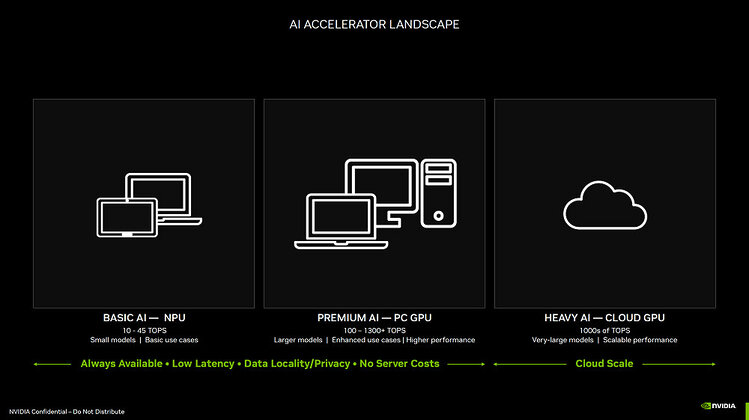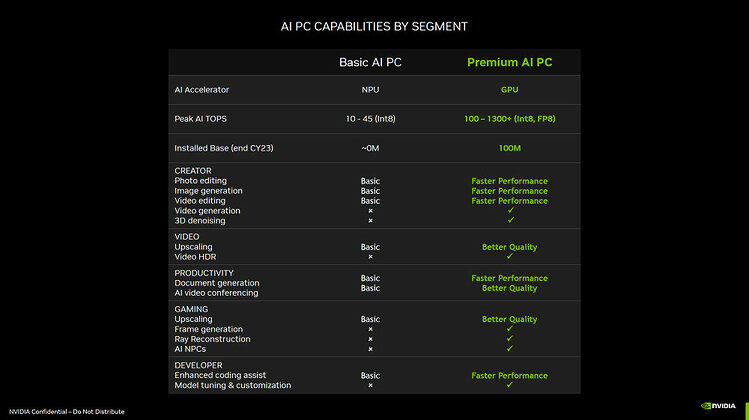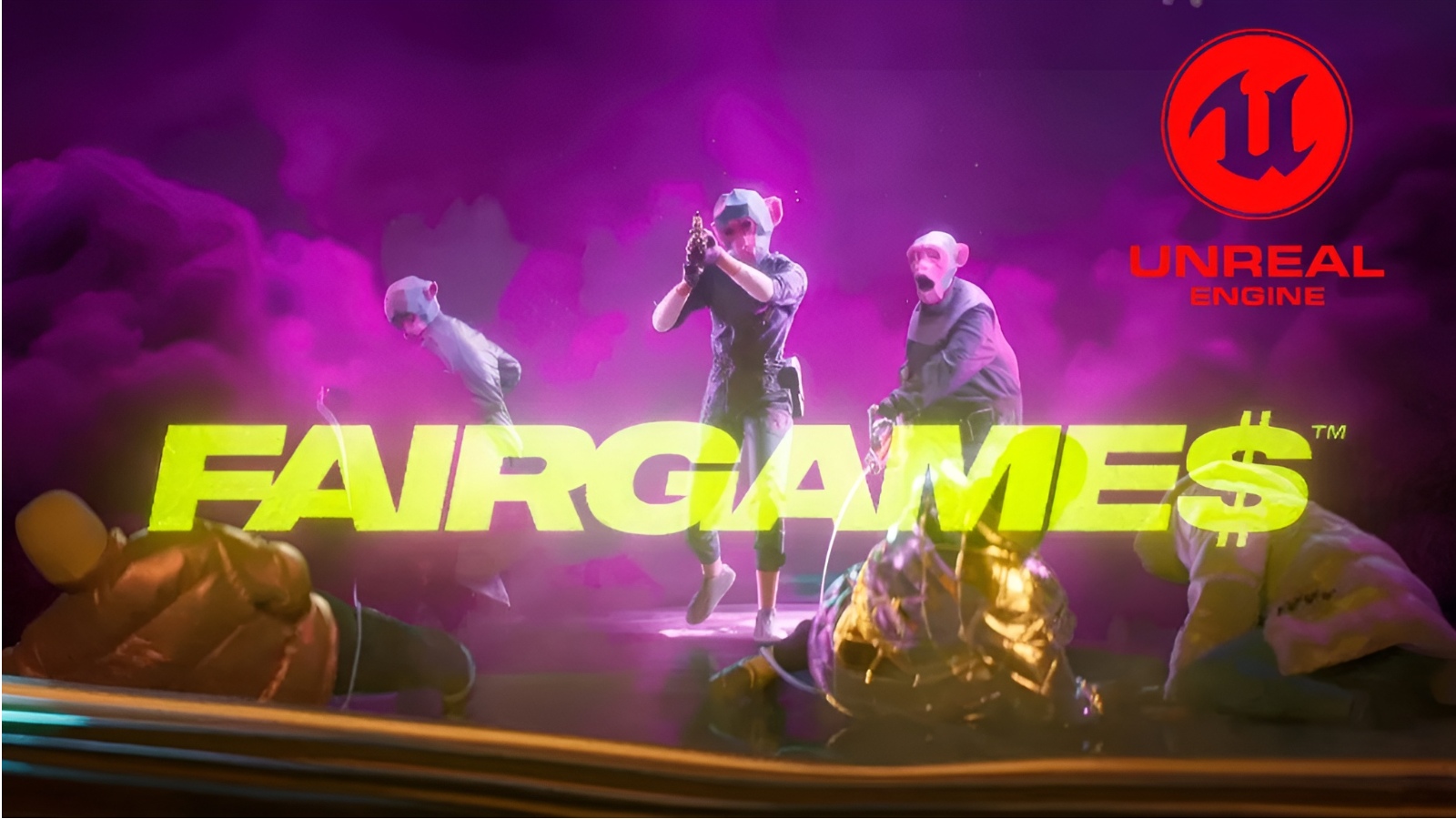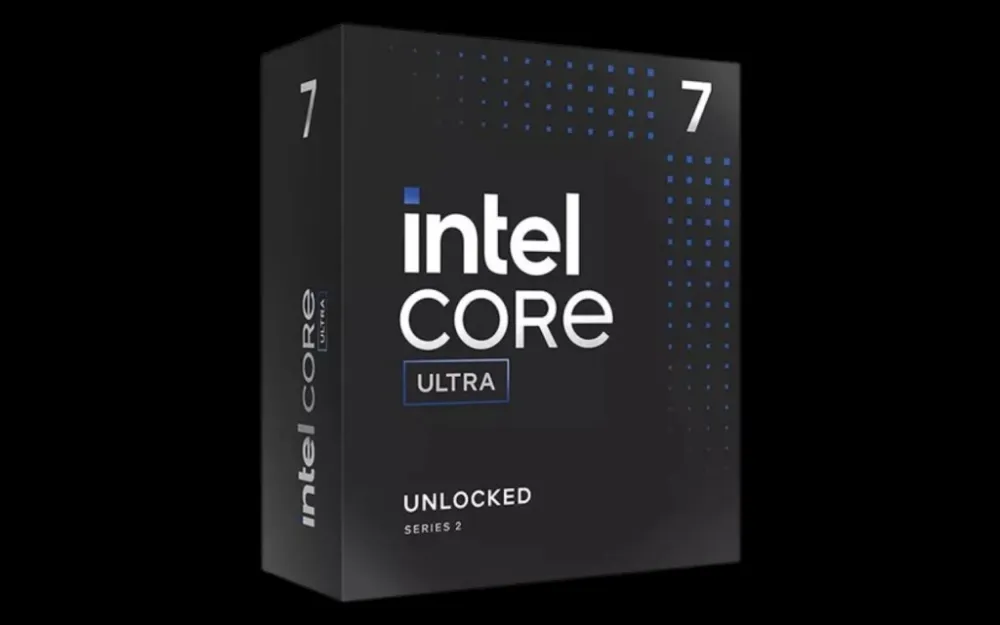- Nvidia promotes its GeForce RTX lineup as a premium AI option for personal computers.
- GeForce RTX graphics card can offer computing power ranging from 100 to 1,300+ TOPS.
- Nvidia aims to position GeForce RTX cards as indispensable tools for professionals to harness the full potential of AI technology.
Nvidia recently held an event called “NVIDIA RTX for Windows AI,” during which the firm talked about how the GeForce RTX gaming graphics card product line can help with the AI trend.
Nvidia has gradually added AI-related application functionalities to the GeForce RTX product range over the past few years. 2018 saw the introduction of technologies like DLSS, and the latest tools include Frame Generation.
Recent releases like Nvidia Broadcast introduce special effects and processing functions like RTX Video Super-Resolution.
Why it matters: These advancements showcase how AI can benefit people’s everyday lives by enhancing video quality and providing additional features.
According to reports, Nvidia has categorized the AI levels available for the GeForce RTX product line into different areas, including gaming, content creation, audio-visual experiences, productivity, and more.
Integrating NPU processors into personal computers is a trending topic. Existing products boast computing power ranging from 10 to 45 TOPS. Nvidia argues that this level of processing is best suited for handling basic AI tasks, like video special effects processing in Windows Studio, especially in laptops, where battery life is a crucial concern.
However, a desktop environment with a GeForce RTX graphics card can offer computing power ranging from 100 to 1,300+ TOPS, which is substantially faster and more powerful in content production, productivity, development, or AI applications like local LLM.
The company naturally advises using Nvidia RTX graphics cards due to their high efficiency and superior quality. It states that GeForce RTX offers comprehensive software stack compatibility/support, including PyTorch, ONNX, and TensorFlow, enabling high availability and application playback.
Nvidia remains committed to showcasing the extensive compatibility of its GeForce RTX graphics cards with a diverse range of tools and software applications, underscoring its exceptional computing capabilities, particularly within artificial intelligence.
By emphasizing the seamless integration of GeForce RTX GPUs with various software platforms and highlighting their superior performance in AI-driven tasks, the company aims to position these graphics cards as not only powerful gaming companions but also indispensable tools for professionals and enthusiasts.
Thank you! Please share your positive feedback. 🔋
How could we improve this post? Please Help us. 😔
[News Reporter]
Malik Usman is student of Computer Science focused on using his knowledge to produce detailed and informative articles covering the latest findings from the tech industry. His expertise allows him to cover subjects like processors, graphics cards, and more. In addition to the latest hardware, Malik can be found writing about the gaming industry from time to time. He is fond of games like God of War, and his work has been mentioned on websites like Whatculture, VG247, IGN, and Eurogamer.


 Threads
Threads



